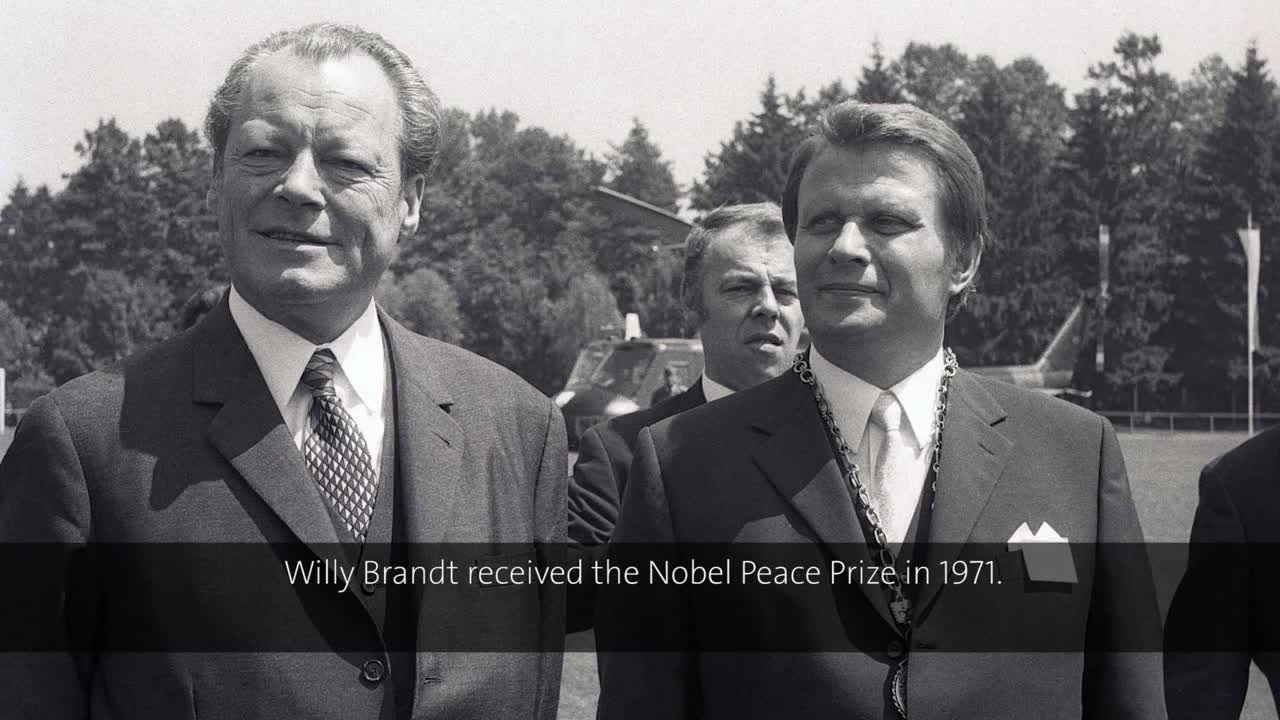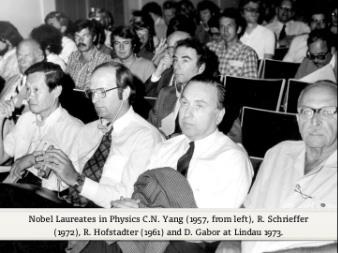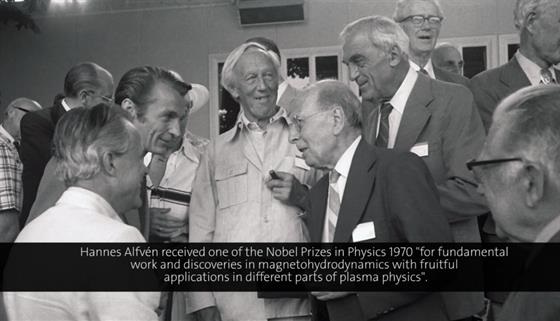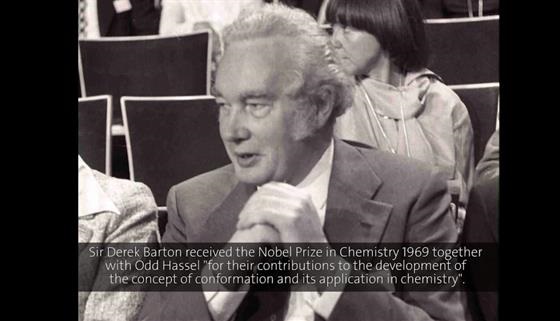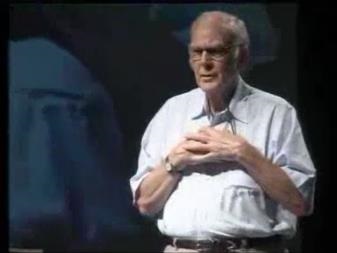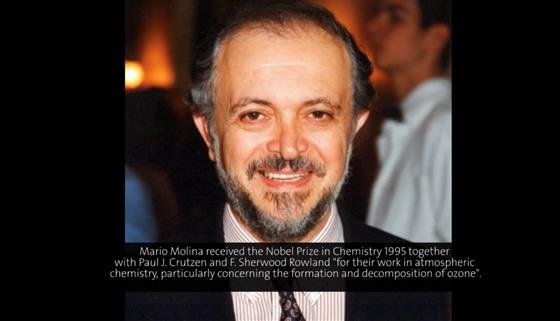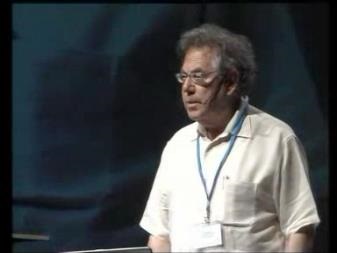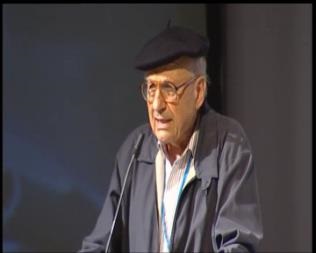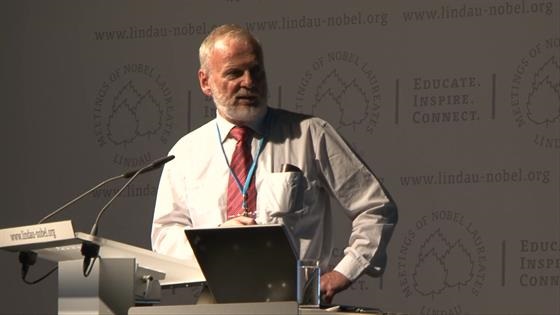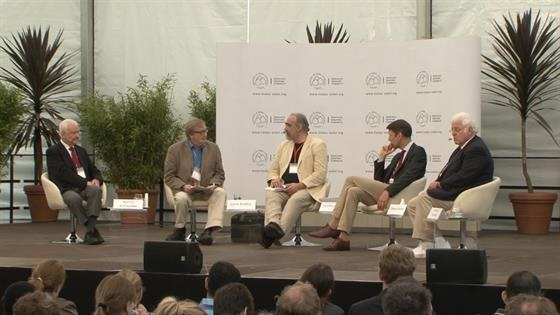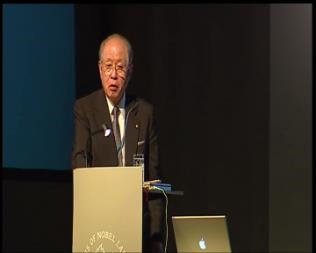Environmental Protection

by Joachim Pietzsch
“Control the Forces We Have Created”
Environmental protection and ecological consciousness are children of the seventies, although they’ve been conceived already in the decade before[1]. Rachel Carsons’s bestseller
Silent spring, for example, published in 1962 and controversially debated until today, was one of the important ecological wake-up calls during the sixties. In 1968, the government of Sweden suggested to the Economic and Social Council of the United Nations to organize a global conference on environmental issues. One year later, the Council agreed to convene such a conference in 1972. This UN Conference on the Human Environment in Stockholm was the first major global environmental meeting, attended by the representatives of 113 countries, even if the Eastern bloc countries declined to participate. Two prime ministers addressed the audience, Olof Palme of the hosting country Sweden, and Indira Gandhi of India who made a strong case for the interdependence of ecology and poverty alleviation in the developing world. "We have made a global decision of immeasurable importance to which this meeting testifies“, the Secretary-General of the Conference, Maurice Strong, said in his opening statement: „We have determined that we must control and harness the forces, which we have ourselves created (...) Our purpose here is to reconcile man’s legitimate, immediate ambitions with the rights of others, with respect for all life supporting systems, and with the rights of generations yet unborn. Our purpose is the enrichment of mankind in every sense, of that phrase. We wish to advance - not recklessly, ignorantly, selfishly and perilously, as we have done in the past - but with greater understanding, wisdom and vision. We are anxious and rightly so, to eliminate poverty, hunger, disease, racial prejudice and the glaring economic inequalities between human beings.“[2]
Today, the Stockholm conference is regarded as the first milestone on the way to a sustainable development of humankind and its planet. Ten days after the conference had ended with a declaration of 26 principles and the intention to create the United Nations Environment Program (UNEP), its main messages took center stage at the 22nd Meeting of Nobel Laureates in Lindau on June 26th, 1972. It was the first time that a lecture in Lindau explicitly dealt with an environmental topic and perhaps it is not surprising that the issues involved were not presented by a scientist but by a politician – by Willy Brandt, Chancellor of the Federal Republic of Germany, and recipient of the Nobel Peace Prize in 1971 for his politics of détente towards the Soviet Union, the German Democratic Republic and other East European countries. His policy „has brought thaw to the cold political climate, and this instills hopes for a new kind of peace for the frozen earth of Europe“, the Chair of the Nobel Peace Prize Committee, Aase Lionæs, had stated.
An Extension of a Policy of Peace
In Brandt’s view, environmental protection is a necessary extension of a global policy of peace, whose goal should be to optimize rather than to maximize economical growth for the sake of all people.
(00:08:50 - 00:15:14)
While Brandt’s commitment to overcome the problems of pollution dates back to the early sixties when, in an electoral campaign, he had promised to help turn the dusty sky above the industrial Ruhr area into a blue one again, his Lindau lecture encompasses more than pollution. He asks for a careful commerce with natural resources at a global scale and reminds scientists of their public responsibility: „We need your research results, your advise and your dedication.“ Partly, Brandt was inspired by his friend and consultant Günter Grass (Nobel Prize in Literature 1999), who had provided him with a „wording aid environmental protection“ already in 1971[3]. More importantly, as several references in his speech show, he stood under the impression of a publication that had been presented to the world some weeks before, very close to Lindau, at the third St. Gallen Symposium in May 1972: The limits to growth, written by 17 scientists of the Massachusetts Institute of Technology (MIT) and commissioned by the Club of Rome, an informal, non-political, multinational group of scientists, intellectuals, educators, and business leaders who had first met in 1968 in Rome, deeply concerned with the future of humankind and in „quest for structured responses to growing world-wide complexities and uncertainties“.
The Predicament of Mankind
Based on a set of deliberately simplified assumptions, the authors of Limits to growth constructed a computer model of the world and calculated projections of its future development. Taking into consideration the dynamics of complex systems and implying exponential growth, they looked at five variables: World population, industrialization, pollution, food production and resource depletion. If the growth of these variables remains unchanged, they concluded in their worst case scenario, the absolute limits to growth on an earth with finite resources will be reached within the next hundred years.
One of the founding members of the Club of Rome was Dennis Gabor, recipient of the Nobel Prize in Physics in 1971 for his invention and development of the holographic method. He attended the Lindau Nobel Laureate Meeting in 1973 to talk about „The Predicament of Mankind“, a title taken from the first prospect of the Club of Rome. At the beginning of his lecture, he summarizes the genesis of The limits to growth:
(00:01:46 - 00:05:38)
Outlining humankind’s dilemma of being caught between its needs for economical welfare, technological progress and ecological self-preservation, Gabor reminds scientists of their capabilities: „What we scientists and technologists must create is a new technology, one which uses only inexhaustible or safely renewing resources. May I remind you that it was not so long ago when all the world lived on a self-renewing resource: timber, wood – it was used for burning, for building houses and it was renewable and safe in the forest. Now, of course, I am far from being for a timber economy or a coal economy but new economies can be created on inexhaustible resources. It is really possible to think of resources, which ought last a million years or so.“ Here, probably unconsciously, Gabor touches the German origin of the term „sustainability“. It was coined in 1713 as „Nachhaltigkeit“ by Hans Carl von Carlowitz in his book Sylvicultura eoconomica (economics of forestry) and meant that in a healthy economy no more timber must be yielded than can grow again.[4] Concluding the results of The limits to growth, Gabor states: „We are living on an earth that is now becoming too small for us. Applied scientists and technologists must adjust their priorities. The first priority is to get our civilization going and not to continue with this irresponsible wasting of energy and material resources.“
As if reality had decided to prove how serious the Club of Rome’s predictions should be taken, the Western World all of a sudden was running short of energy in the fall of 1973. What later became known as the first oil crisis, was triggered by the Yom-Kippur-War, which had started on October 6th, 1973, with an attack of Egypt and Syria on Israel. To punish the USA and other Western countries for their support of Israel, the Organization of the Petroleum Exporting Countries reduced its oil output and proclaimed an oil embargo. Within one day the oil prize increased by 70 percent, and overall quadrupled during the following year. This lead to a severe and unexpected economic recession in the oil-dependent industrial countries and dramatically challenged their traditional trust in a continuous economic growth.
A Farewell to the Ivory Tower
In his lecture „Wissenschaft, Energie und Rüstung“ („Science, energy and armament“), which he held in Lindau in 1976, the Swedish physicist Hannes Alfvén put these developments into perspective. Limitation, he says, is an intrinsic factor of growth processes. While a human being grows from a single cell to an adult individual during the first 15 years of its life, it would result in catastrophe, if growth continued at that speed. Luckily, human growth ended after adolescence, and it could well be that humankind had finally reached its technological adolescence. „As scientists, we are not living in the ivory tower any longer“, Alfvén says and describes the current responsibilities of scientists in society:
(00:05:02 - 00:10:13)
„Spaceship earth must strive for an ecological balance“, Alfvén emphasized. The prerequisite for this balance, however, is maintaining peace within a world full of nuclear weapons. Disarmament therefore was a top priority for Hannes Alfvén, who had been awarded with a Nobel Prize in Physics in 1970 for his fundamental work in plasma physics and his discovery of magnetohydrodynamic forces. From 1970 to 1975 he had served as the President of the Pugwash Conferences on Science and World Affairs, which had been founded in 1957 by Joseph Rotblat (Nobel Peace Prize in 1995) with the main objective to eliminate all weapons of mass destruction and war as a social institution to settle international disputes. „Man has a unique trait that dinosaurs did not have“, he said in Lindau. „He has a brain, with which he can plan for the future (...) But is the human brain really useful? In principle yes, but only if we use it to save our species from extinction. The use of our brain in this way, however, is a completely new activity, for which we haven’t any experience yet.“
We have to remember that the Cold War - despite of a climate of thawing – and the arms race between the two super powers and their allies still were in swing in those years, culminating in the early eighties. Many people, especially in Europe, felt the eve of global destruction as being imminent and got involved with the peace movement.
A Classification of Crises
When Sir Derek Barton, who had received the Nobel Prize in Chemistry together with Odd Hassel in 1969 for their conceptual studies of the conformation of chemical compounds, came to Lindau for the first time in 1977, he therefore classified the danger of a nuclear war as the only „real crisis“ that threatened the world, while he described pollution as a merely imaginary crisis:
(00:04:21 - 00:10:40)
In his lecture, Barton distinguishes imaginary, artificial and real crises: The energy crisis is an artificial one, „provoked by the establishment of an international monopoly.“ The food crisis is artificial because it can be solved by a better and just distribution of goods. A crisis of overpopulation does not exist yet. It is still artificial, but may become real in the future. The same holds true for the economic crisis that has arisen in connection with the energy crisis: It has an artificial origin but could become real if we are not careful. The danger of a nuclear war, however, has not disappeared: „There are perhaps 100.000 nuclear devices in the world at the moment, perhaps there are several hundred thousand, perhaps there are even a million - nobody knows. But everybody knows that it’s quite enough to kill off the population of the world several times.“ Despite of this real danger, Barton feels „modestly optimistic, because for the first time in history we have seen a group of countries come together and give up some of their sacred national sovereignty“. As if anticipating the Nobel Peace Prize of 2012, the British chemist praises the idea of the European Union and is looking forward to the first election of a European Parliament.
Ecology became such an important global issue during the seventies that a number of suggestions were made to the Nobel Foundation to accept a new Nobel Prize within this area. The Nobel Foundation however did not follow these suggestions. In 1980, this prompted the Swedish journalist and professional philatelist Jacob von Uexkull to use the money he received for selling his inherited collection of Arabian stamps to establish „The Right Livelihood Prize“. Presented annually in Stockholm at a ceremony in the Swedish Parliament, this „Alternative Nobel Prize“ intends to recognize the efforts of persons or groups who are „offering practical and exemplary answers to the most urgent challenges facing us today“ and has gained worldwide attention. Until 2012, 149 Laureates from 62 countries have received this Prize.
A Roadmap for Our Common Future
In the eighties, ecological initiatives made great progress in the global political arena. In 1983, the UN inaugurated a World Commission on Environment and Development, which was chaired by the Norwegian prime minister Gro Harlem Brundtland. Under her leadership, this commission worked out the report „Our common future“. In her foreword to this report Brundtland recalled: „During the time we met as a Commission, tragedies such as the African famines, the leak at the pesticides factory at Bhopal, India, and the nuclear disaster at Chernobyl, USSR, appeared to justify the grave predictions about the human future that were becoming commonplace during the mid-1980s. But at public hearings we held on five continents, we also heard from the individual victims of more chronic, widespread disasters: the debt crisis, stagnating aid to and investment in developing countries, falling commodity prices and falling personal incomes. We became convinced that major changes were needed, both in attitudes and in the way our societies are organized.“ The „Brundtland report“ was published in 1987. It introduced the concept of sustainable development: „Humanity has the ability to make development sustainable to ensure that it meets the needs of the present without compromising the ability of future generations to meet their own needs (...) Sustainable development is not a fixed state of harmony, but rather a process of change in which the exploitation of resources, the direction of investments, the orientation of technological development, and institutional change are made consistent with future as well as present needs. We do not pretend that the process is easy or straightforward. Painful choices have to be made. Thus, in the final analysis, sustainable development must rest on political will.“[5] Five years later, the UN Conference on Environment and Development in Rio de Janeiro adopted its Agenda 21 with the recognition that sustainable development has to take both economic, social and environmental factors into account.
Science Exerts Political Influence
In the meantime, environmental science for the first time had proven its ability to successfully determine political decisions. Paul Crutzen, Mario Molina and Sherwood Rowland had already shown in the seventies that most nitrous gases formed by natural microorganisms and, to an even greater extent, industrially manufactured chlorofluorocarbons (CFCs) were destroying the earth’s vital ozone layer. Initially, this discovery had led only to limited controls on CFC consumption. However, when a hole in the ozone layer was discovered above the Antarctic in 1985, it provided dramatic confirmation of their research findings. Policymakers worldwide were alarmed: the Montreal Protocol came into force in 1989 and was binding under international law. Signatory countries pledged to put an end to the production and emission of ozone-depleting substances. When Crutzen, Molina and Rowland in 1995 shared the Nobel Prize in Chemistry „for their work in atmospheric chemistry, particularly concerning the formation and decomposition of ozone“, the Royal Swedish Academy of Sciences predicted: „Given compliance with the prohibitions, the ozone layer should gradually begin to heal after the turn of the century“. This compliance was achieved, as Sherwood Rowland could demonstrate in Lindau eleven years later:
(00:26:23 - 00:27:37)
Crutzen, Molina and Rowland have been frequently attending the Lindau Nobel Laureate Meetings. When Molina in 1998 outlined the „Environmental challenges for the 21st century”, he initially looked back on the research results on ozone depletion. Then he went on to discuss the issue of climate change, emphasizing that humankind cannot afford to wait for full scientific evidence before taking action:
(00:28:51 - 00:33:59)
In 2002, Paul Crutzen coined the term „anthropocene“[6]. It has become a key concept in today’s ecological debates. Following on from the Holocene geological era, the Anthropocene denotes the period that began with the invention of the steam engine and the start of the Industrial Revolution, when humankind radically redesigned its environment. „Mankind will remain a major environmental force for many millennia. A daunting task lies ahead for scientists and engineers to guide society towards environmentally sustainable management during the era of the Anthropocene.“ In his Lindau lecture „Atmospheric Chemistry and Climate in the Anthropocene” Crutzen illustrated as how daunting he perceives this task:
(00:26:43 - 00:27:43)
In Quest of Optimal Energy Sources
The Kyoto Protocol to the United Nations Framework Convention on Climate Change entered into force in 2005. Those countries that have signed it agreed upon certain targets for reducing their emission of carbon dioxide and other greenhouse gases. Replacing energy from fossil fuels by energy from renewable sources such as sun and wind is one of the most promising instruments to reach these targets. A strong advocat of renewable energies is Walter Kohn, a phycisist who received a Nobel Prize in Chemistry in 1998 for his development of the density-functional theory. An active member of the US government’s Basic Energy Science Advisory Committee, he produced a documentary “The Power of the Sun”, which found worldwide distribution and was also presented in Lindau in 2006. Walter Kohn is convinced that „an earth powered predominantly by solar and wind energy“ is feasible, as he explained in Lindau in 2009:
(00:29:30 - 00:30:53)
The energy of the sun is not only directly warming the earth but also indirectly enabling the growth of renewable biomass, i.e. plants that can be used to produce biofuels. This happens in the process of photosynthesis. Aren’t biofuels from abundant sources then the ideal substitute for scarce fossil fuels? Not at all, says Hartmut Michel who received the 1988 Nobel Prize in Chemistry jointly with Johann Deisenhofer and Robert Huber for the determination of the three-dimensional structure of a photosynthetic reaction centre. Though photosynthesis is essential for the existence of higher life forms on our planet, it is extremely inefficient at converting the energy from sunlight into plant components, he explains. Charging the batteries for electric vehicles with the power generated by photovoltaic cells makes much better sense than filling up internal combustion engine vehicles with biofuel.
(00:22:21 - 00:28:21)
The capacity of vehicle batteries is, however, still limited despite all of the advances in lithium-ion technology. And neither the sun nor the wind orientate their energy supply to demand, as coal-fired or nuclear power plants can do by regulating their output. The electricity they generate must either be transported to the consumer straight away or it must be put into temporary storage, otherwise it will be lost. The future of energy supply and storage therefore is a huge challenge for science, politics, economy and society, especially if nuclear power is not regarded as an option any more. After the nuclear disaster in Fukushima in Japan in 2011, the German government decided to abandon nuclear energy until 2022 at the latest and to execute and implement the strategy of „Energiewende“ within the next forty years. In a panel discussion at the Lindau Nobel Laureate Meeting 2012, Georg Schütte, state secretary in the federal ministry of research explained this strategy, which led to a controversial debate with the two Nobel Laureates Carlo Rubbia (Physics 1984) and Robert Laughlin (Physics 1998), with Martin Keilhacker, chairman of the task force Energy of the German Physical Society, and prompted a lot questions from young researchers:
(00:10:18 - 00:14:34)
A Green Key to the Future?
Energy supply is only one important aspect of sustainable development. An environmental-friendly chemistry, which seeks to reduce and prevent pollution and its potentially hazardous consequences at its source, is another one. This approach to chemical synthesis and production has been influencing research and industry more and more since Paul Anastas and John C. Warner first formulated twelve principles of Green Chemistry in 1991[7]. A prominent proponent of green chemistry is Ryoji Noyori who shared a Nobel Prize in Chemistry in 2001 with William Knowles for the development of catalytic asymmetric synthesis. In his lecture “Chemistry: the key to our future” he emphasizes however that it will be easy to realize the principles of this sustainable chemistry:
(00:03:30 - 00:05:30)
During the last fifty years, humankind has come a long way from realizing the importance of their environment to appreciating the concept of a sustainable development, it seems. Yet the journey into a sustainable future has only just begun and the necessary roadmaps are far from providing reliable guidance. The major challenges to be tackled and solved still lie ahead.
Footnotes:
[1] A unique German example of this conception, which publicly went largely unnoticed however, was the „Grüne Charta von der Mainau“ published on April 20th, 1961. It was initiated and signed by Count Lennart Bernadotte, one of the three founders of the Lindau Nobel Laureate Meetings, and contained the statement: „Die Grundlagen unseres Lebens sind in Gefahr geraten, weil lebenswichtige Elemente der Natur verschmutzt, vernichtet und vergiftet werden und weil der Lärm uns unerträglich bedrängt. Die Würde des Menschen ist dort bedroht, wo seine natürliche Umwelt beeinträchtigt wird.“
[2] http://www.mauricestrong.net/index.php/opening-statement
[3] Willy Brandt und Günter Grass: Der Briefwechsel. Herausgegeben von Martin Kölbel, Göttingen 2013
[4] Ulrich Grober: Die Entdeckung der Nachhaltigkeit – Die Kulturgeschichte eines Begriffs. München 2010 (Ulrich Grober: Sustainability – A cultural history. London 2012)
[5] Our Common Future, From One Earth to One World - An Overview by the World Commission on Environment and Development, § 27 + 30.
http://www.un-documents.net/our-common-future.pdf
[6] Paul J. Crutzen, Geology of Mankind, Nature, Vol. 415, 3 January 2002, p. 23
[7] http://greenchemistry.yale.edu/javascript/tinymce/plugins/filemanager/files/principles-of-green-chemistry.pdf
Additional Lectures by the Nobel Laureates associated with Environmental Protection:
Jack Steinberger (2008): What Future for Climate and Energy?
Panel Discussion (2008): Climate Changes and Energy Challenges.
Ryoji Noyori (2010): Molecular Catalysis for Green Chemistry.
Ivar Giaever (2012): The Strange Case of Global Warming.
Robert Laughlin (2012): Powering the Future.
Mario Molina (2012): The Science and Policy of Climate Change.

